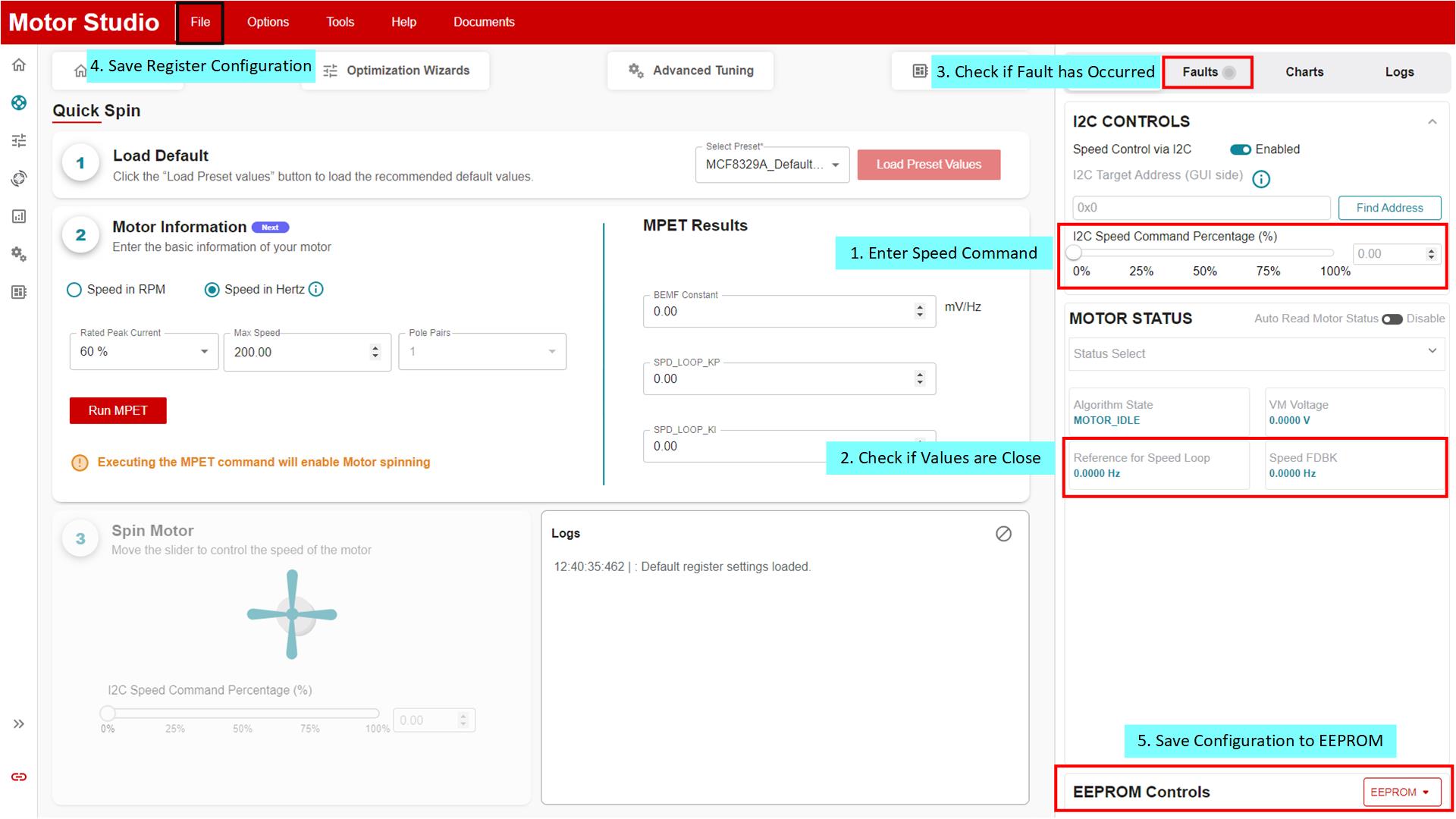SLLU374 November 2024 MCF8329A
4.2 Testing for Successful Startup Into Closed Loop
- Apply a nonzero speed command using the slider or text box within the Spin Motor section of the Quick Spin page. Once a speed command is provided, the motor should begin to spin and accelerate until the motor reaches the target speed.
- After the motor stops accelerating check that the values in Reference for Speed Loop and Speed FDBK under the Motor Status section are close to the same value.
- Check for any faults if the Faults tab shows a red circle. If a fault has been reported, go to Section 6 and follow the debug steps to correct the fault.
- Once the motor is able to spin into closed loop and not trigger any faults, stop the motor and save the register configuration to a json file by clicking on File -> Save Registers. In the window that pops up, select Json File and click on the Save Button.
- To have configuration for the registers covered in section 7.7 of the MCF8329A data sheet load when the device powers-up these register values can be loaded into EEPROM. To write the configured register values to EEPROM, click the EEPROM drop down located at the bottom right of Motor Studio and select the Write To EEPROM option. Click the Yes button in the window that pops up.
 Figure 4-12 Closed Loop Spin Test
Steps
Figure 4-12 Closed Loop Spin Test
Steps